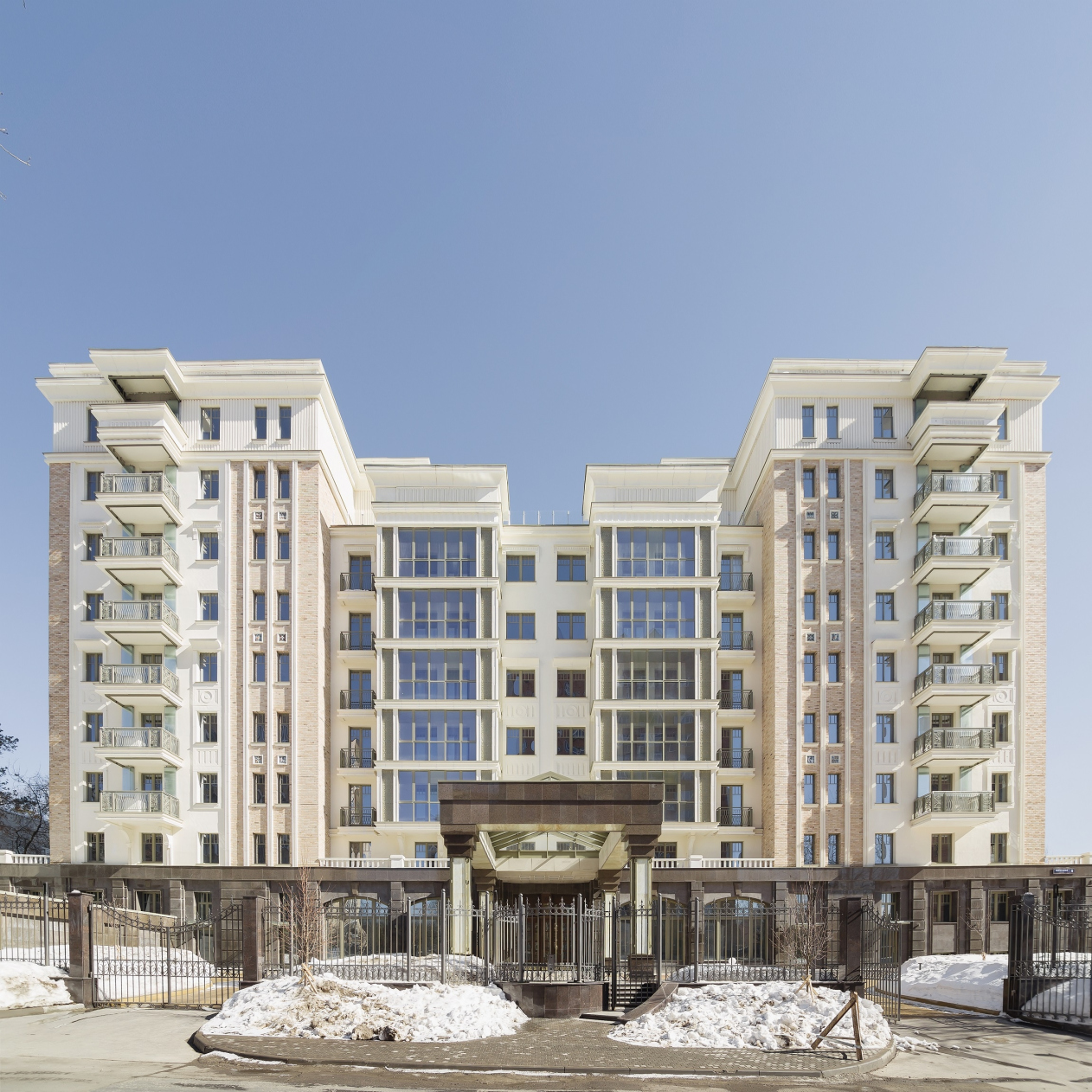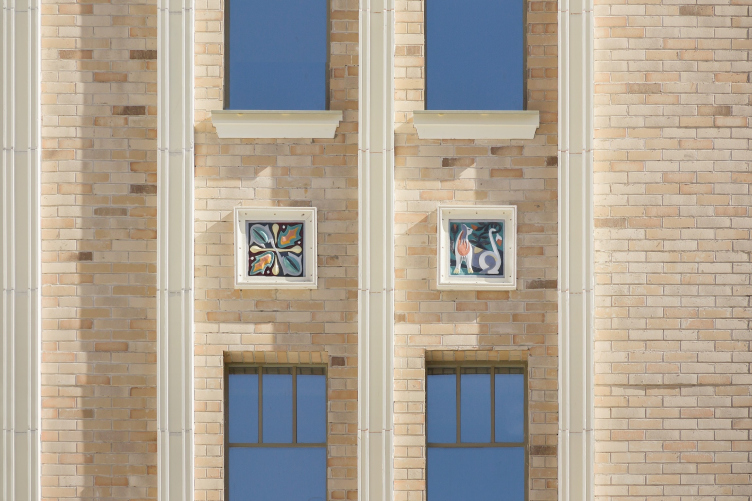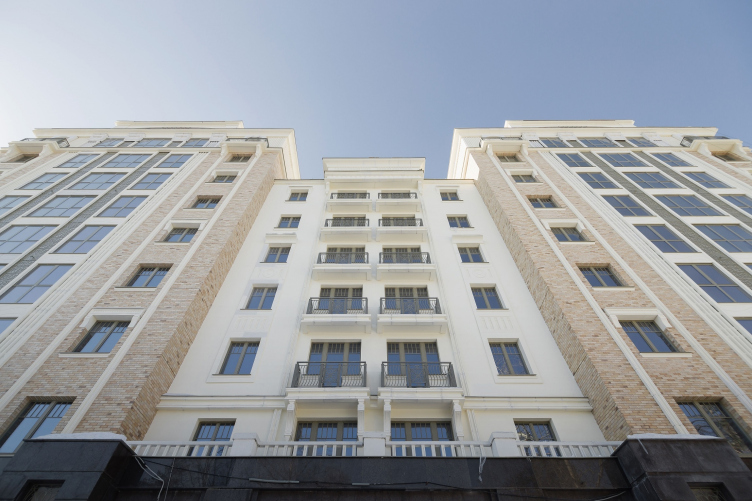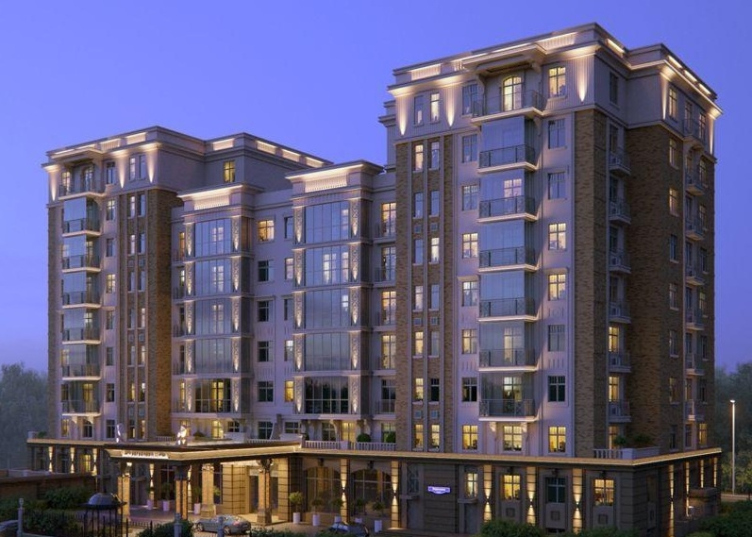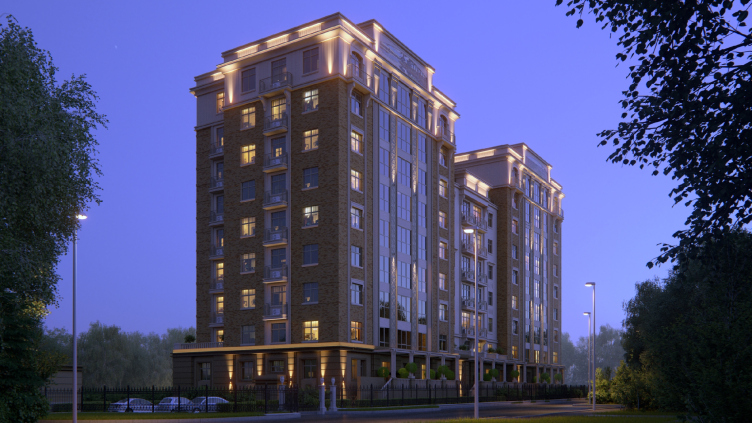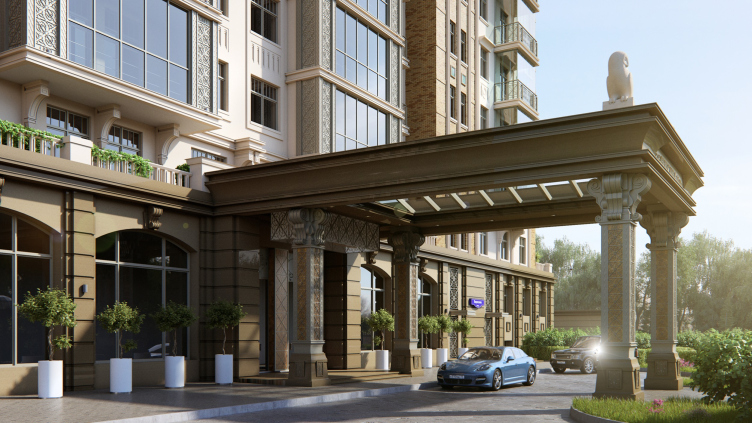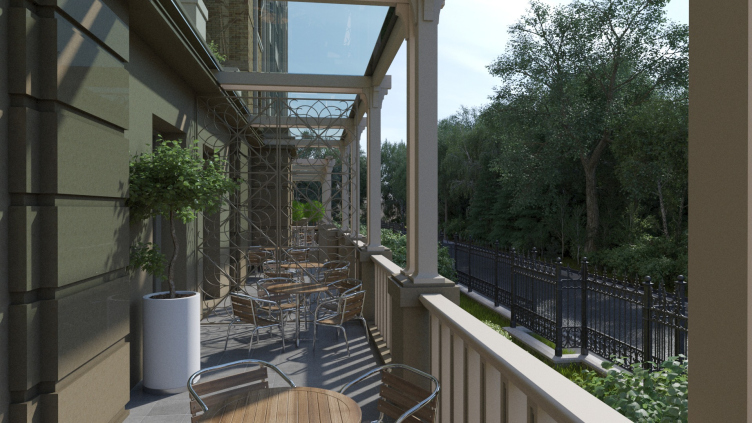The high-end residential complex “Aristocrat”
Copyright: Photograph © Mezonproekt
The house stands at the edge of the forest, which muffles the highway noise almost completely; it's really quiet and peaceful here by the standards of a modern city. The architecture of the complex exactly matches the marketing task: as is known, the format of the Moscow premium-class house first of all presupposes the decorative style that combines the image of a palace with a reasonable degree of adornment. Today, this style is popularly defined as “Art Deco”, which is not entirely correct because the overall “rich and respectable” image also includes Art Nouveau and eclecticism, the Art Deco being the image that is closest in time. Alexandra Kuzmina and Ilia Mashkov have been working in this field for quite a while, and rather successfully, too – specifically, the direct predecessor of “Aristocrat” is the “House of the Academy of Sciences” built in 2009 on the Sergeya Kapitsy Street, right across from the entrance to the Yuri Platonov Academy, also situated in a quiet setting, not far away from the Moskva River. A brick background, stucco details, cantilevered structures, flutes, and sculptures. A podium, an attic, a cornice, and pilasters. Decorative inserts and wrought-iron balconies. Generally speaking, this set forms the minimum minimorum of a respectable-looking house. Its obvious merit is the comfortable scale combined with a rich texture. The main risk connected with working in this genre, so welcomed by the clients and marketers alike is the interpretation of historical prototypes. And, this risk is like a double-edged sword: it’s a bad thing if you do this true to the original, and it’s a bad thing if you do this too general, larger, and simpler. The professional community, well aware of the “minimalism” notion, accepts the decorative approach rather reluctantly, but society at large, tired of staying on the minimalist diet, is asking for more. Seemingly, after the 30 years of “textured city” the hunger must be satisfied, but decorated buildings are still popular. This is a challenge, and works by Mezonproject are providing their response to it. This answer is specific and proportionate enough, reserved in its way, teetering on the verge of generalized Neo-Greek, yet with a Palladian symmetric U-shaped plan, Art Nouveau that performs on the verge of theatrical orientalist “Egyptian” indulgences, and the modern ornamental architecture, whose techniques are gradually winning over the “realistic” architecture of orders and decorative sculpture, i.e. the recognizable elements of tenements of the historicism period.
If we are to compare “Aristocrat” (built in 2017) to the Academy House (built in 2009) – there are eight years lying between them, but they still echo one another proportion-wise, like blood brothers, the difference being that the contrastive brown-and-beige tone became lighter, the brick acquired an almost flesh tint, and the decorative elements received a greater degree of generalization. The energetic lotus-shaped ornaments and the “gargoyle” cantilevered structures gave way to light greenish grids and majolica inserts, whose relationship with the Abramtsev and Talashkin ceramics, so much loved by many people, is perfectly obvious.
The high-end residential complex “Aristocrat”
Copyright: Photograph © Mezonproekt
Generally speaking, tile and majolica are the well-known soft spots of any anti-modernist, an urban creator looking to see something pleasing to the eye. Some of such joys are the tile of the second half of the XVII century in Yaroslavl, the Pertsova House on the Prechistenskaya Embankment, the Church of Holy Spirit in already-mentioned Talashkino; but not just them – virtually any glazed insert you may lay your eyes on the city facades. We cling to these colorful reliefs, and, probably, it would not be an exaggeration to say that this feast of color is something, among other things, that we love the Art Nouveau architecture for. The “Aristocrat” house responds to the subject: the windows in wide frames alternate with “tiles” with floral ornaments, birds and gryphons, and the attics above the projections are adorned by large majolica inserts. The patterns are large and bright, which is only fair, because they function as colorful spots and are meant to be seen from a distance. At the same time, low degree of elaboration is characteristic for later artists, which, one way or another, makes this solution look more contemporary.
Generalizing the decorative details is also quite characteristic. An important part is played by the grilles: non-transparent metallic ones and transparent white ventilation grilles on the park facade, and balcony grilles all over the place. The pilasters here are in fact slender vertical molds. The attic receives ribs – conditional flutes, but without grooves, rather a striped relief. There are few cantilevered structures, no sculptures, large curbs prevail. In general, the decor has become not only lighter in terms of color, but more concise and lighter in terms of visual weight.
The high-end residential complex “Aristocrat”
Copyright: Photograph © Mezonproekt
As was already mentioned earlier, the house has a U-shaped floor plan; it is embellished by projections on side ends, and by groups of recessed balconies in the main part. The basement floor, unlike the main light-colored volume, is coated with dark granite, made more sophisticated by horizontal rock-face plaques, and is made still heavier by a massive portico, stretched far forward between the wings of the house towards the Veresaeva Street, even slightly further than was required in order to provide a comfortable exit in a velvet dress from the limousine.
The high-end residential complex “Aristocrat”
Copyright: Photograph © Mezonproekt
The high-end residential complex “Aristocrat”
Copyright: Photograph © Mezonproekt
“In the project, the basement floor had even richer decoration – Ilia Mashkov shares – It was planned that in the lower part the house was to look expensive, to the point of excessive, solemn, and festive, becoming more reserved as we went up. The crowning cornice of the first floor is not made to project; the first floor turned out to be ascetic, and it is dissonant with the top one.”
The high-end residential complex “Aristocrat”
Copyright: Photograph © Mezonproekt
The high-end residential complex “Aristocrat”
Copyright: Photograph © Mezonproekt
The apartments in this house are rather spacious, which corresponds to its class; on the corners, there are living rooms, 40 square meters, with three windows. Along the contour of the basement floor, as well as on the roof of the central part, whose height is slightly lower than that of the wings, terraces appear with a small garden and a green roof at the top. In the lobby at the entrance, the residents are welcomed by a double grand staircase.
Anyway, the facades of this high-end house, generally sticking to generalized historicism, are revisited in the spirit of modern decorative. Its tone is light, which is meant to, among other things, to lighten up the volume. The very seven and nine-story height makes the house a comfortable example of city construction against the 12-15 story environment, while the delicate ornaments and confident tread of symmetrical “U-plan” turns it into a kind of palace in front of a pine park at the very beginning of the Rublev Highway. The class of the housing speaks for itself: in Moscow, it is asking for a decorated solution. However, in this case we are seeing the approach to decoration taken to a whole new level: the elements of the historical facade become virtually the signs of themselves, laconic and light enough not to look excessive. The focus of attention is shifted to other motives: the ornamental band, textured brick, and inserts of color ceramics, attractive like pictures on the walls.

